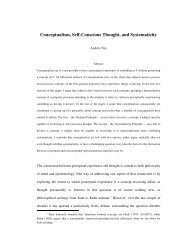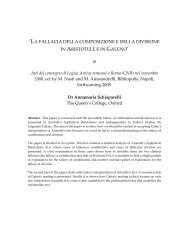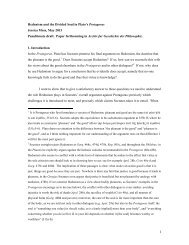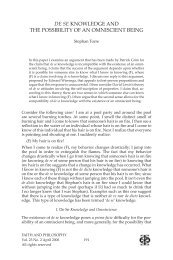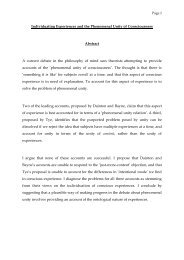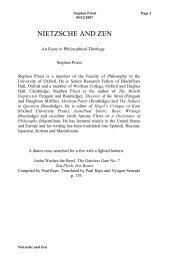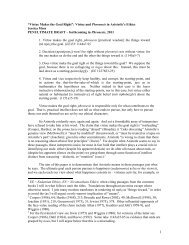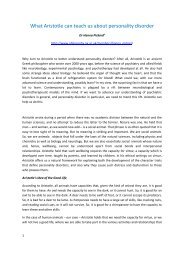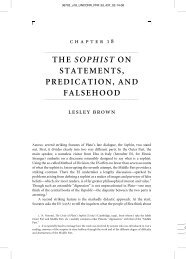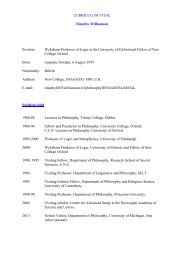Between Saying and Doing: Towards an Analytic Pragmatism
Between Saying and Doing: Towards an Analytic Pragmatism
Between Saying and Doing: Towards an Analytic Pragmatism
Create successful ePaper yourself
Turn your PDF publications into a flip-book with our unique Google optimized e-Paper software.
Br<strong><strong>an</strong>d</strong>om<br />
from <strong><strong>an</strong>d</strong> is explicative of, features integral to every autonomous discursive practice—features<br />
intimately related to, but distinct from, those made explicit by ordinary logical vocabulary. I will<br />
then enter into <strong>an</strong> extended treatment of the relation between alethic <strong><strong>an</strong>d</strong> deontic (modal <strong><strong>an</strong>d</strong><br />
normative) vocabularies (where the norms in question are those that govern the use of vocabulary, that is,<br />
conceptual norms rather th<strong>an</strong> moral ones). When we look at those vocabularies through the lens of<br />
me<strong>an</strong>ing-use <strong>an</strong>alysis, a sequence of startling relations between them emerges.<br />
For a start, I argue that deontic normative vocabulary is also universally LX (that it is<br />
VP-sufficient to specify practices-or-abilities that are both PV-necessary for deploying <strong>an</strong>y<br />
autonomous vocabulary, <strong><strong>an</strong>d</strong> PP-sufficient for practices-or-abilities PV-sufficient for deploying<br />
the deontic normative vocabulary that explicates them). Although in this regard it belongs in a<br />
box with alethic modal vocabulary, the features of autonomous vocabulary use that it explicates<br />
are quite different from those explicated by modal vocabulary. I then argue that what lies behind<br />
Sellars’s dark <strong><strong>an</strong>d</strong> pregn<strong>an</strong>t claim that “The l<strong>an</strong>guage of modality is a tr<strong>an</strong>sposed l<strong>an</strong>guage of<br />
norms” is the fact that deontic normative vocabulary c<strong>an</strong> serve as a pragmatic metavocabulary<br />
for alethic modal vocabulary. In my fifth lecture, I will show how exploiting that relation makes<br />
possible a new kind of directly modal formal sem<strong>an</strong>tics: incompatibility sem<strong>an</strong>tics. It in turn<br />
gives us a new sem<strong>an</strong>tic perspective both on traditional logical vocabulary, <strong><strong>an</strong>d</strong> on modal<br />
vocabulary. The final lecture will then weave all these str<strong><strong>an</strong>d</strong>s into a me<strong>an</strong>ing-use <strong>an</strong>alysis of<br />
intentionality itself (what is expressed by intentional vocabulary) as a pragmatically mediated<br />
sem<strong>an</strong>tic relation essentially involving both what is expressed by modal <strong><strong>an</strong>d</strong> what is expressed by<br />
normative vocabulary.<br />
LL1 Text.rtf 40 11/8/2007



